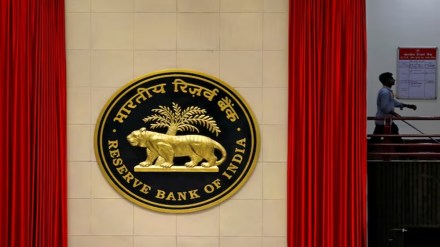By Shinjini Kumar
The Reserve Bank of India’s (RBI) announcement to set up a 30-member Regulatory Review Cell (RRC) to “streamline and rationalise” their regulations/directives/circulars and hopefully clarifications and counter-clarifications issued over time, is a truly welcome move. If executed well, it has the potential to build the legacy of the governor that will be remembered by the industry for years to come. On the other hand, it runs the risk of becoming yet another exercise in bureaucratic tough talk and creating a cascading effect on the same stakeholders, which may either maintain status quo or be only marginally better: a well-meaning gesture, to be celebrated but without easing the lives of regulated entities, professionals, or the ever-growing circle of legal entities caught in the web of compliance. Because the much-loved and admired RBI touches the lives of a billion-plus Indians, not just through inflation targeting or monetary transmission-however tenuous-and know your customer (KYC) requirements, but also through a vastly inclusive digital transaction capability, frequent KYC refresh, financial fraud mitigation, cross-border transactions and so on.
So, what will it take to make this impactful and worthy of legacy? I am sure there are enough capable minds at play to grapple with this question. But as someone who has worked inside and outside of the RBI for an equal number of years, I would highlight the following:
Brutal honesty while assessing the status
Often, a leader coming in from outside has the ability and desire to identify complexity of processes that are not as obvious to the teams that are used to them and have also developed a fear of letting go. It will help to rise above this and recognise that complex, overlapping, and obsolete regulations are not a statement of failure, but simply a function of degradation and mismatches that set in with time and an inevitability.
Identifying stakeholders
Having heard industry leaders sitting on both sides of the table, there seems to be a compulsive need to understate difficulties and overstate praise. Teasing out specific pain points from senior leaders of business or compliance is difficult, because they do not suffer at the operational level. More importantly, they would rather save their goodwill for a rainy day, of which there seem plenty anyway! Hence, identifying people who deal with regulations at operational and interpretation levels is key.
Engaging with stakeholders
This is always the tricky part. More than other regulators, or government departments, the RBI is simply difficult to meet. It is not clear if limited public dealings contribute to higher integrity, but it surely insulates its operational staff from being exposed to implementation nuances and second- or third-order impact. Consider chartered accountants. In the foreign exchange arena, the RBI relies on CA certifications in bulk, but they are always reluctant to meeting CAs. The expectation is that the bank, as an authorised dealer, will ensure compliance and solve all queries. There is an interesting incentive mis-alignment here. The CA is the one charging the client and the keenest to solve the problem. The bank, on the other hand, is not charging the client, and therefore has high obligation and low incentive to solve. Interestingly, this is also the reason why the RBI likes the latter and dislikes the former. But in an age of increasing complexity in trade and transactions, this leads to delays and pain all around.
Delineate intent upfront
Many of the RBI’s departments are engaged in development or facilitation tasks. But the approach of the staff and the tone and tenor or the dispute resolution or query mechanism are the same as the regulatory departments. This is obvious because the cadre is the same, and it is not very different from how administration in general is set up. But articulating that the financial inclusion department would strive to make it easy to include without compromising on safety, or that the foreign exchange department is to facilitate foreign trade or investments without allowing for money laundering or leakage, can help. It sounds simple, because it comes from a simple directive an early boss gave me when posting me to handle the FDI desk in RBI New Delhi in 1994, “These are people coming to your country to do business, make it easy.” That is also when the RBI introduced a citizen’s charter, eventually mandating it for all banks. It is still a living document, but only a document.
Have a query mechanism
Of course, there is no overstating the need for a dialogue box, almost as good as what we expect from any service organisation, especially in the trade, investment, or transaction facilitation areas for clarifications and suggestions. This feedback mechanism can then be used by the RRC to do the job they have set out to do.
Co-ordination
Over the years, with the growing economy, fiscal and regulatory authorities have also increased. While at the policy level there are committees and institutional mechanisms to ensure co-ordination or alignment, at operational levels it is still left to intermediaries and market players to linearly solve inter-agency problems of varying complexity. In addition, these solutions, when found, do not make it to any publicly available resources that can be relied upon. There also needs to be an official clearing house for operational queries.
To conclude, great intent needs to be coupled with great execution to get us to the goal of better understanding and alignment between regulators, regulated entities, intermediaries, and market players for a less bureaucratic and more efficient mechanism to support one of the world’s largest and most ambitious economies. To that end, the number of regulations is not the material parameter to celebrate or berate; it will be their relevance.
The writer is founder, Mysaltapp.
Disclaimer: Views expressed are personal and do not reflect the official position or policy of FinancialExpress.com. Reproducing this content without permission is prohibited.
